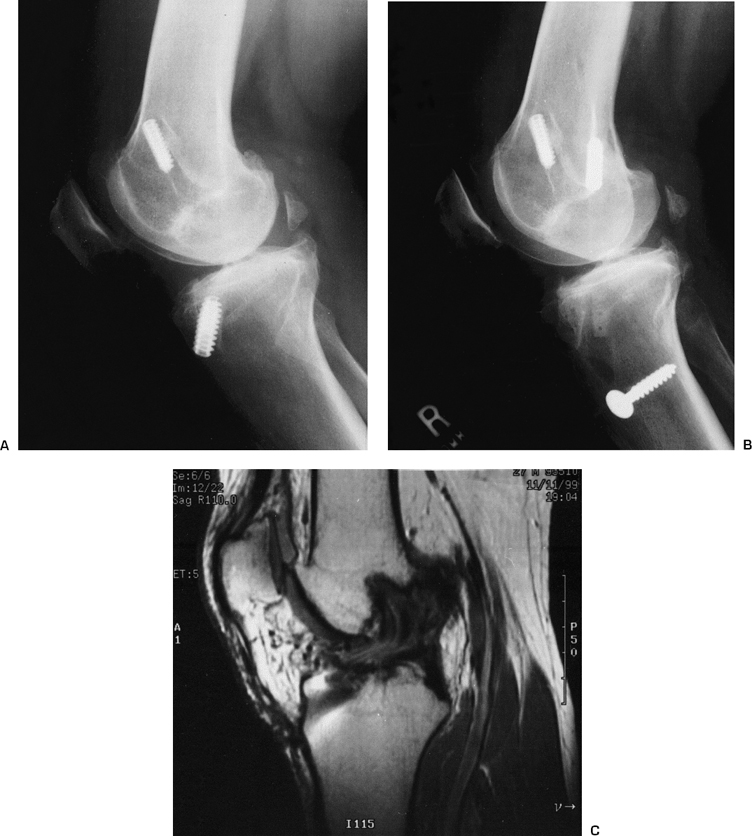18 Surgical Atlas of the Knee Ligament Injuries: Revision of the Failed Anterior Cruciate Ligament Reconstruction
Patient Presentation and Symptoms
With approximately 50,000 anterior cruciate ligament (ACL) reconstructions performed per year, the number of revision ACL surgeries has steadily increased. The outcomes of ACL revision surgery continue to improve, but the results are less successful than those of primary ACL reconstructions. Patient presentation is varied. Following acute reinjury, patients present with instability, effusion, and symptomatic giving way. Patients with chronic insufficiency often present with complaints of loss of motion and pain from resulting degenerative changes or subtle instability with exertional activity from long-standing impingement and graft failure.
Although presentation and symptoms are variable among patients, it is imperative that the treating surgeon define the reason for failure of the primary procedure and proceed with a systematic approach to ACL revision. The operative goals of ACL revision surgery should be to perform an adequate notchplasty, to achieve anatomic tunnel placement, and to obtain secure fixation for early rehabilitation. The functional goals of revision ACL surgery are to eliminate the pivot shift and anterior drawer and to prevent further degenerative changes to the knee.
Indications
- Subjective and objective instability
- Loss of motion secondary to previous improper graft placement
- Minimal associated degenerative arthritis
Contraindications
- Complaints of pain alone
- Inability to cooperate with postoperative rehabilitation
- Infection
- Knee “abuser”
Physical Examination
- Inspection (swelling, surgical incisions)
- Range of motion
- Lachman and pivot-shift tests
- Associated instability patterns (posterolateral instability, posteromedial, chronic posterior cruciate ligament)
- Lower extremity alignment
- Patellofemoral tracking, patella mobility
Diagnostic Tests
- Standard radiographs—anteroposterior (AP), lateral, tunnel, Merchant, and 45-degree weight-bearing (WB) AP—demonstrate the following:
- Location and types of hardware (Fig. 18–1A,B)
- Notch architecture
- Degenerative changes
- Alignment
- Notch architecture
- Location and types of hardware (Fig. 18–1A,B)
- Magnetic resonance imaging (MRI) demonstrates the following:
- ACL integrity (Fig. 18–1C)
- Tunnel location
- Impingement
- Osteolysis/tunnel enlargement
- ACL integrity (Fig. 18–1C)
Special Considerations
- Procedures to improve range of motion (ROM) should be performed prior to proceeding with ACL revision.
- Enlarged tunnels secondary to osteolysis may require staged grafting procedures.
Preoperative Planning and Timing of Surgery
- Determine cause of failure.
- Obtain previous operative reports, images, videotapes.
- Reestablish ROM prior to revision.
- Graft selection: autologous patellar tendon, hamstrings, contralateral patellar tendon, allograft patellar tendon, hamstrings, Achilles tendon

Stay updated, free articles. Join our Telegram channel

Full access? Get Clinical Tree








